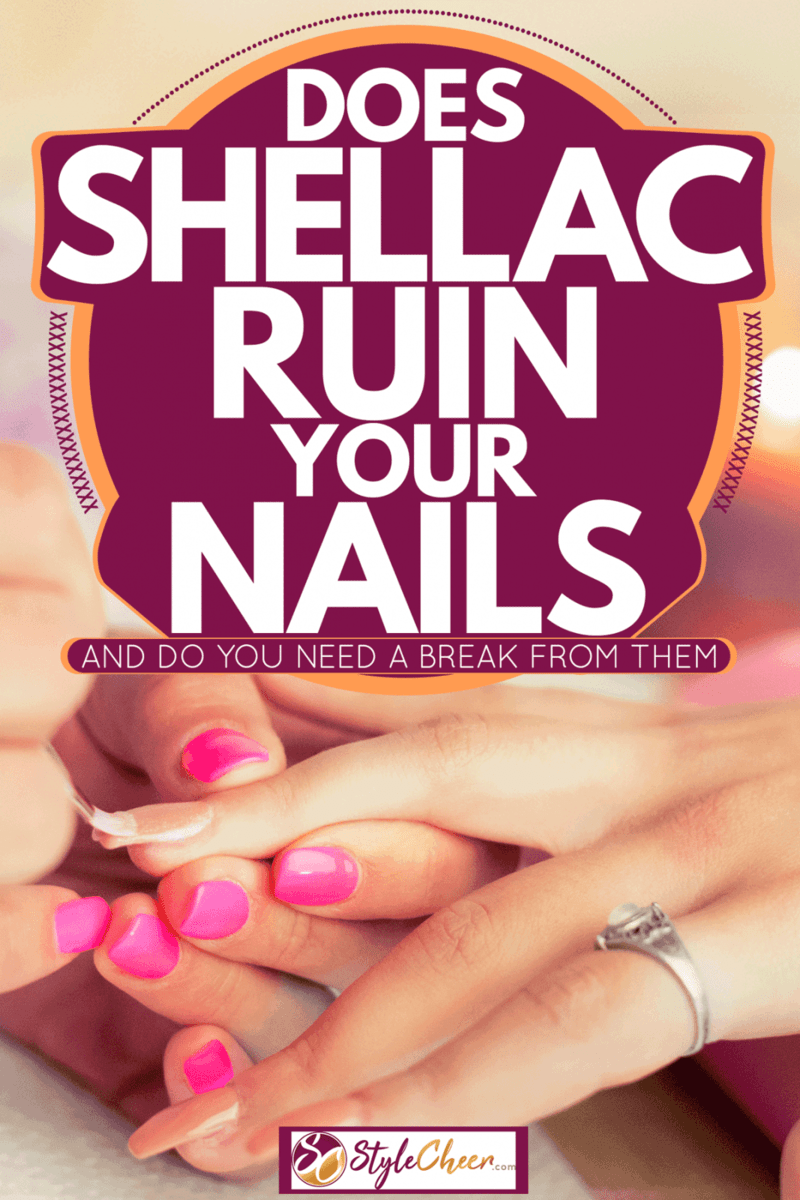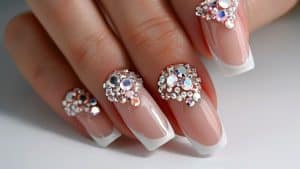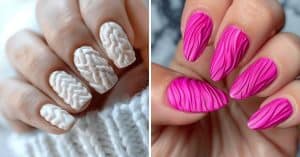Getting your nails done is a simple way to feel polished, even in casual wear. A beautiful coat of shiny polish can boost your mood significantly. However, choosing the right manicure that lasts and is gentle on your nails is crucial.
Traditional polish chips easily, while gel lasts longer but can be harsh during removal. This brings us to shellac, a hybrid that offers the durability of a gel and the shine of regular polish.
In this guide, we explore shellac manicures to determine if they compromise nail health, helping you decide if shellac is right for your next nail treatment.
What is Shellac?
Shellac is a gel-polish hybrid developed by Creative Nail Design (CND). They combine gel polish's longevity and traditional nail polish's shine and color to give you a long-lasting and beautiful manicure.
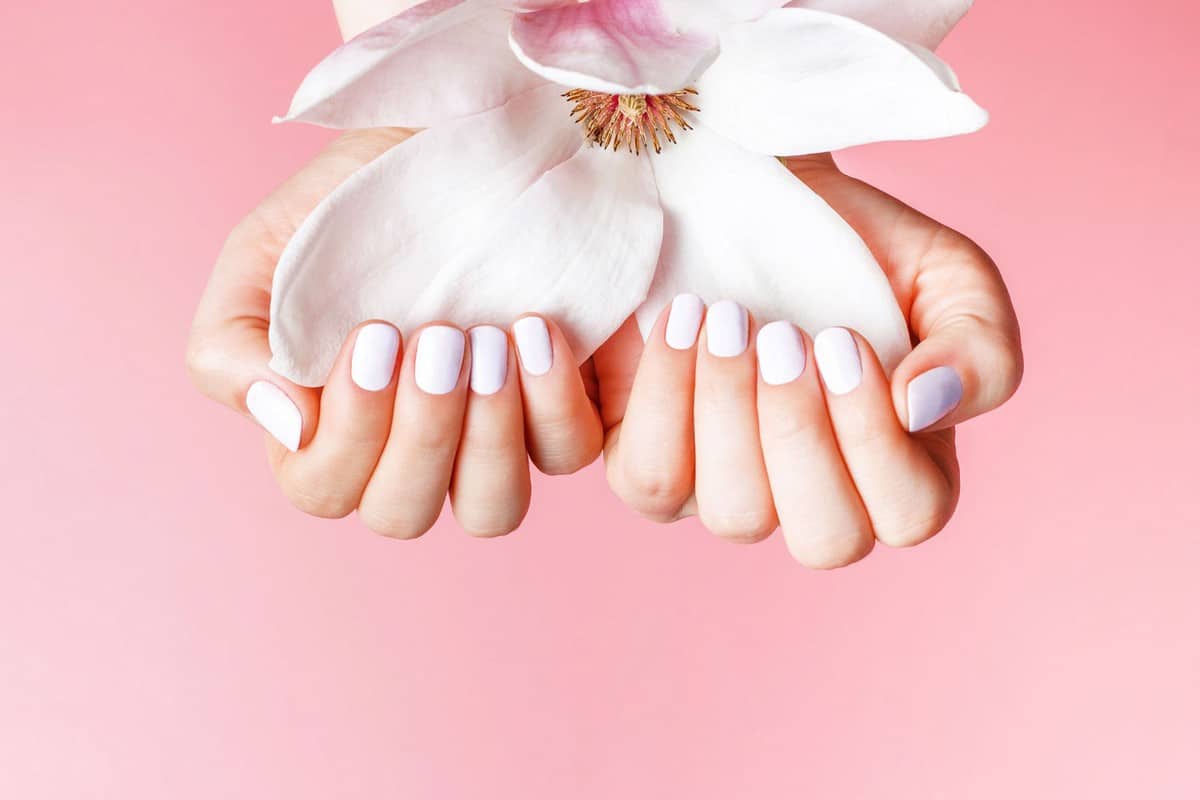
This article may include affiliate links and elements that were carefully created by our team using advanced ai to help you envision the best style advice.
The process of applying shellac is what really sets this manicure apart. Shellac requires three coats, two polish coats, and one topcoat. Each layer is cured by a UV light before the next coat is applied.
Pros
- Shellac lasts up to two weeks, at which point you're more likely to have unsightly growout than you are major chips.
- Because each shellac layer is cured by UV light, there is minimal drying time and zero chances of smudging your newly manicured nails.
- Since shellac is a gel and polish hybrid, your nails come out looking shiny and polished without the thick layers of gel.
- When you get them removed at a salon, shellac leaves you with little damage to your natural nails.
Cons
- Like most longer-lasting nail processes, shellac requires that your natural nails are roughed up a bit before application to create a textured surface for the polish to better adhere to. This obviously is intentional damage to the top layer of your nail.
- Since shellac is a hybrid of gel and polish, it may not last as long as thicker gel manicures. However, the timing isn't significantly different.
- Shellac is more expensive than a typical manicure since it's a specialized formula and requires a time-consuming process.
- There are almost 100 color shades to choose from. This may not sound like a con, but in comparison to gel and polish, and the chance that salons may not carry all of them, it's a limited amount.
How often should you give your nails a break from shellac?
For any type of artificial nail, you should take a week-long break every eight weeks. Since shellac, gel, dip dye, and acrylic all require buffing the nails beforehand and grinding or harsh acetone for removal, your top layer of nails needs time to recover.
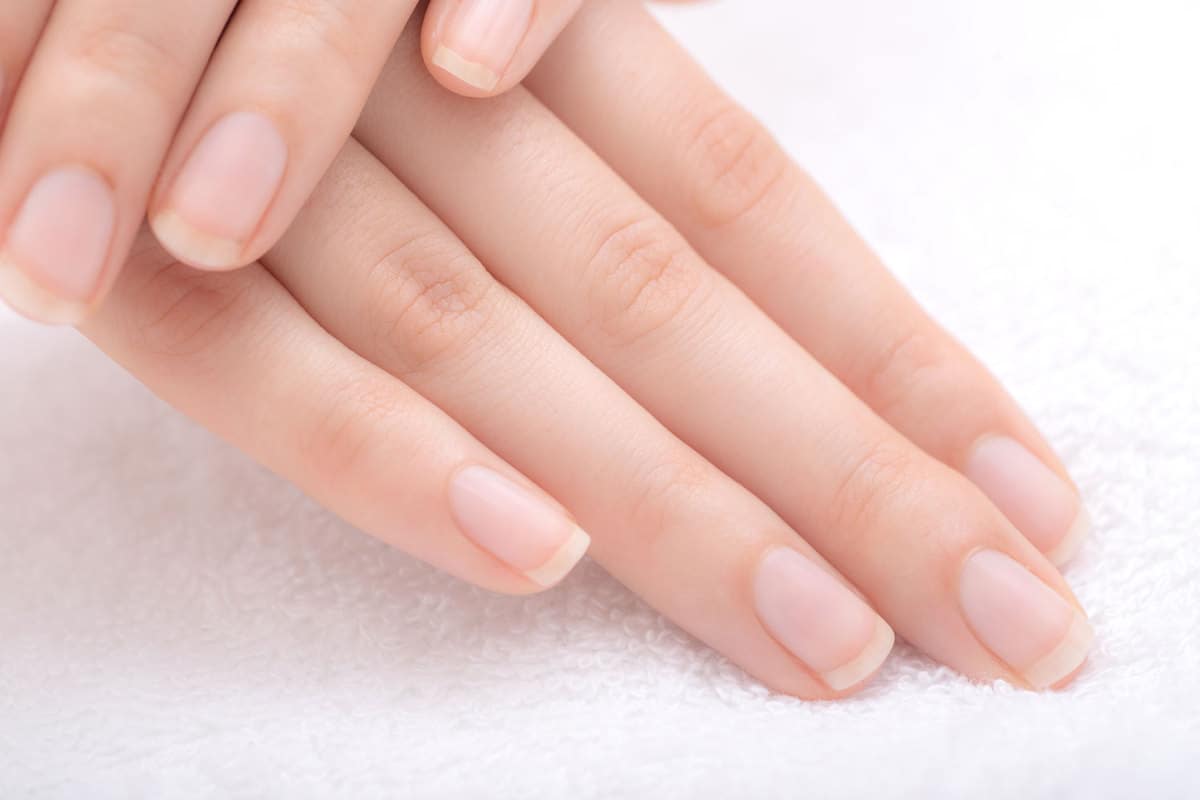
For those wearing acrylics, consider checking out our article "How Often Should You Get a New Set of Acrylic Nails?" for specific maintenance tips.
For shellac, which lasts two weeks, a week-long break between every four consecutive manicures should give your nails enough time to recuperate. This regular interval helps maintain nail health while enjoying the benefits of durable, long-lasting shellac manicures.
Why do my nails hurt after removing shellac?
When you aren't getting shellac professionally removed, you can damage and hurt your own nails.
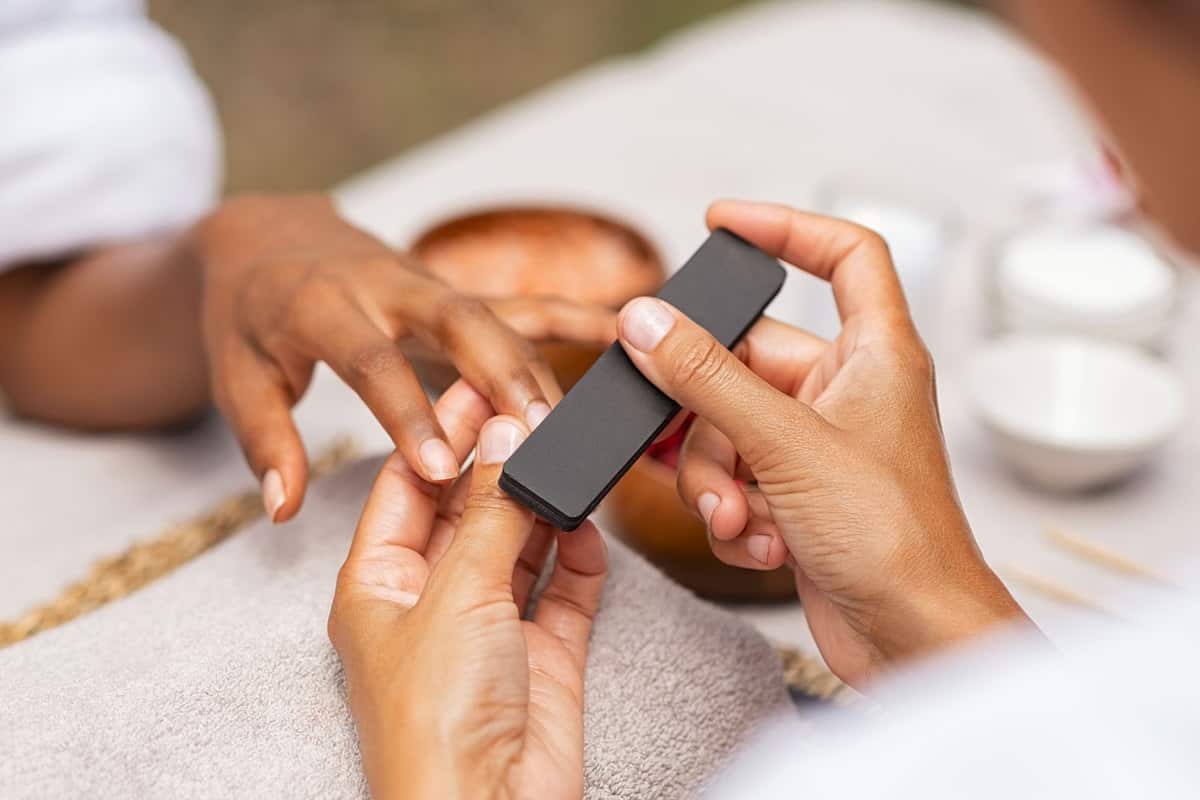
Shellac is fairly easy to remove. It either needs to soak in Creative Nail Designs' (CND) formulated remover or pure acetone for at least ten minutes. At that point, you should be able to wipe away most, if not all, of the product without scraping.
Patience is difficult to acquire when removing shellac at home. This means you may spend less time waiting for the nails to soak and more time filing, scraping, or picking at the polish, which can cause your nails to be sore later.
If you want to remove the nails at home with minimal damage and soreness, allow your nails to soak long enough that they break down the layers of cured polish.
If you get restless, you can soak cotton swabs in acetone or CND remover, place them on your nails, and use foil covers to let them soak while still maintaining the use of your hands.
How do I strengthen my nails after shellac?
When you're taking a break from shellac or other nail products, you can follow a few steps to help strengthen your nails.
- Keep your nails trimmed. Long nails are more likely to break, and trimming them helps remove some of the weaker parts of the nail.
- If your top layer of the nail is peeling or rough and uneven, lightly buff it out to a smooth surface to prevent further peeling.
- Paint your nails with a strengthening treatment polish.
- Most manicures will require removing your cuticles to create a clean edge for polish.
Try a strengthening treatment polish to replenish nails.
Add moisture back into your nail beds with cuticle oil to build healthy cuticles.
What is the difference between shellac and gel polish?
The biggest difference between shellac and gel is the formula. Gel polish is a liquid gel consisting of acrylic monomers.
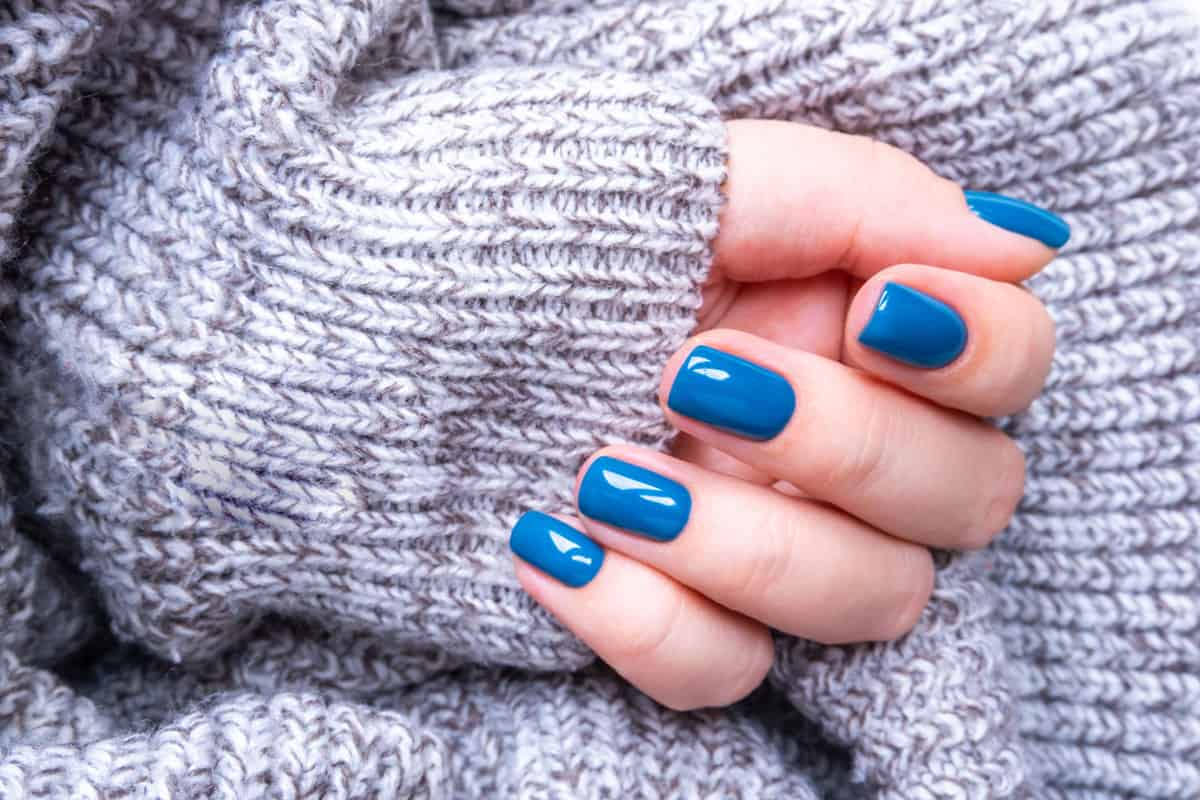
The end result is a thick and flexible fake nail. Shellac combines this gel formula with traditional polish, resulting in a harder version of a gel nail.
As we mentioned above, shellac is a hybrid that borrows from the long-lasting properties of gel polish.
Although both are less likely to chip, shellac is thinner and contains traditional nail polish properties, making it less likely to last as long as a gel manicure but still maintain shine and color.
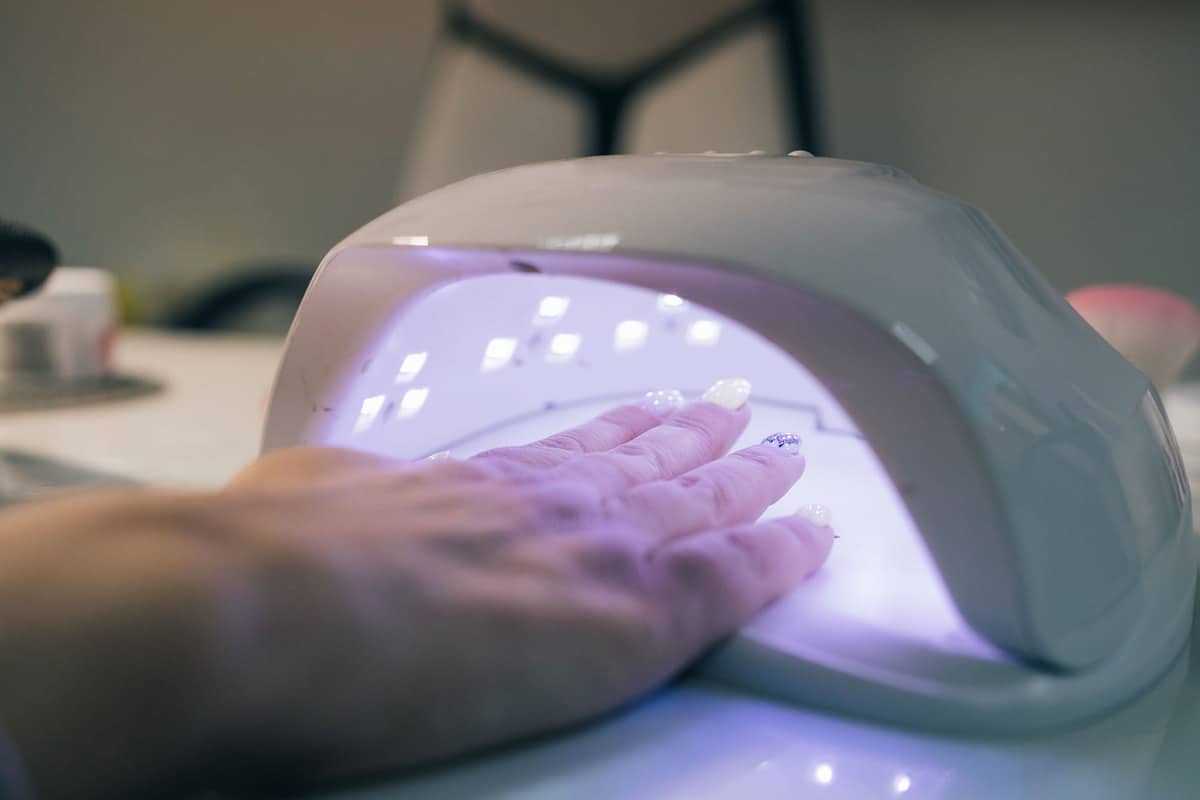
While both processes consist of curing and drying under UV light, gel polish will do a bit more damage to your nails during removal than shellac.
Gel requires that your nails be roughed up during the removal process in order to allow the remover to penetrate the layers of polish underneath. You're more likely to have damage to your top nail layer during the removal of gel polish.
Interested in checking out other popular nail trends? Read this post to learn about dip nails: "How Long Can You Keep Dip Nails On?"
In Conclusion
Shellac polish offers a less damaging alternative to traditional nail treatments, requiring minimal harm during application and removal. Giving your nails a week-long break every eight weeks is crucial to maintaining nail health.
Popular for its durability and gentleness, shellac is an excellent choice for those seeking long-lasting manicures. Remember to rest your nails to preserve their natural strength periodically.
Show how much you care by sharing this post using the image below with your social network, letting friends in on these useful insights.
